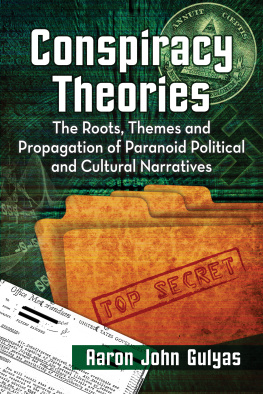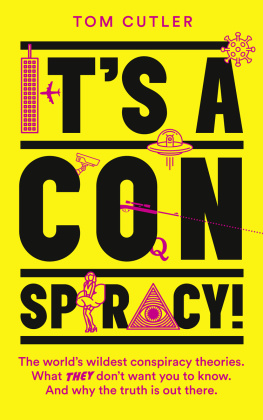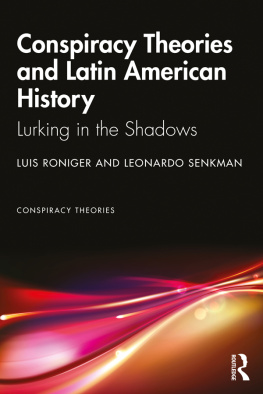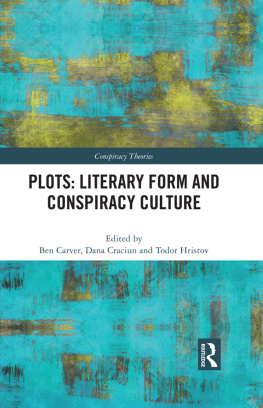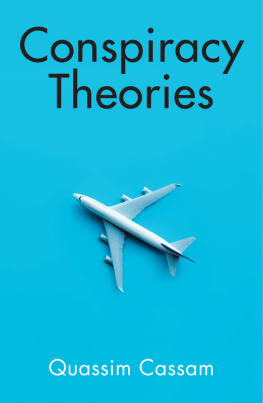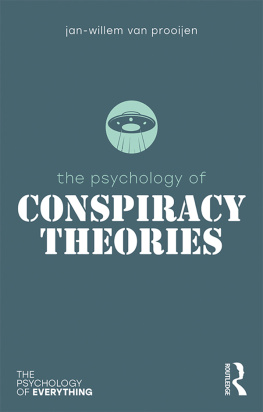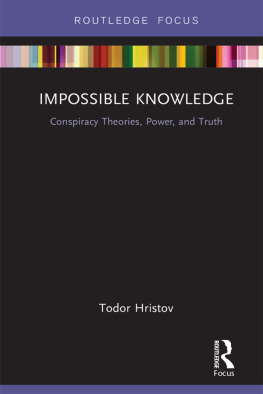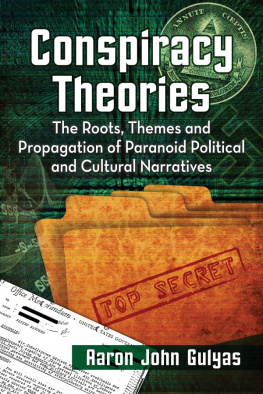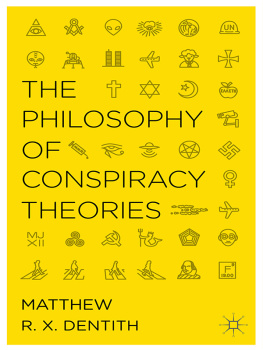
Also by AARON JOHN GULYAS
Extraterrestrials and the American Zeitgeist:
Alien Contact Tales Since the 1950s (McFarland 2013)
LIBRARY OF CONGRESS CATALOGUING DATA ARE AVAILABLE
BRITISH LIBRARY CATALOGUING DATA ARE AVAILABLE
e-ISBN: 978-1-4766-2349-8
2016 Aaron John Gulyas. All rights reserved
No part of this book may be reproduced or transmitted in any form or by any means, electronic or mechanical, including photocopying or recording, or by any information storage and retrieval system, without permission in writing from the publisher.
On the cover: 1952 FBI declassified Office Memorandum; all other images 2016 -MG-/Lingbeek/Pobytov/iStock
McFarland & Company, Inc., Publishers
Box 611, Jefferson, North Carolina 28640
www.mcfarlandpub.com
For Commander X
Acknowledgments
Love and appreciation, as always, to Cindy and Matthew for their time and patience while I was working on this project. Thanks as well to innumerable friends and colleagues who remained fairly good-natured I when spent way too much time explaining just why underground bases were so fascinating. Special mention should go to Jessica Himstedt at the Mott Library for handling all my research needs efficiently and for being a good sport about promoting my work to the campus community.
Preface
Many of us have been conspiracy theorists at some point in our lives. That does not necessarily mean we have holed up in a bunker, wearing an aluminum foil hat, or weve insisted that our primary care physician scan us for implanted mind control or alien tracking devices. Conspiracy theories, sometimes, can be much more subtle. A conspiratorial frame of mind may result from a series of real or perceived slights against us or others. It can come to us through unrelated conversations thatwhen squinted at in just the right waydovetail in enlightening ways. A series of events may cause us to wonder if some kind of causal relationship existed where none actually did. Humans often seek patterns and connections between disparate ideas, concepts or events. Storytelling is part of human culture. Combine these two ideas and it is not surprising that narratives emerge that created connections and patterns. During the second half of the twentieth century citizens of the western democracies (particularly the United States) began to lose confidence in their national governments. As real incidents of secrecy and cover-ups were conflated with long lived paranoid stories, many of the conspiracy theory narratives with which we are familiar began to emerge. As access to print media, television and, eventually, the Internet spread during that time, conspiracy narratives multiplied. Every story has a beginning. While it may be true with regard to history, it is not always the case that we can find that beginning. When historical evidence becomes diluted through the depredations of popular culture, finding the roots of a narrative becomes more difficult still. Conspiracy theories are a prime example of this phenomenon. Despite the tiny kernels of historical truth and circumstance that often serve as the launching point of various conspiracy theories, finding and evaluating those bits and pieces of truth is often challenging.
Conspiracy theories and the complex narratives produced by those who believe in them can often vary greatly. They emerged from both the political right and the political left. The belief systems of their adherents include the atheistic and secular as well as the fundamentalist and theocratic. Some conspiracy theories are extremely limited in their scope, alleging cover-ups and hidden agendas relating to specific contexts such as a stolen election, instances of political-corporate collusion, or a war initiated via deceit. Others are vast and complex, taking those seemingly isolated incidents and weaving them into a narrative that spans decades, centuries, or even millennia.
Given their outrageous, unbelievable, and extremist nature one might reasonably conclude that a prudent observer of politics and culture should dismiss conspiracy theories out of hand. One could argue that there are many issues that are demonstrably much more important and fact-based with which one should engage. Despite the fringe position these theories occupy, they persist and continue to evolve in response to new political, social, and cultural concerns. Because of this, conspiracy theories (and theorists) are important. Despite the corrosive effect that some conspiracy theories have sometimes had on public discourse, particularly during the late twentieth and early twenty-first centuries, understanding their origins and development is crucial for navigating the dangerous currents of politics and culture in the twenty-first century. While conspiracy theories exist in the shadows, they have noticeable effects on discourse in the real world.
No book can adequately explore, dissect, and analyze every extant conspiracy theory and this book does not intend to. Rather, this study will delve into several prominent and specific manifestations of conspiracy theory and paranoia with the intention of exploring the roots of these narratives and explicating the historical context which has surrounded the development of these theories. This context, of course, includes any factual basis for the historical claims of these narratives. While any historical basis should not be overstated, the connections between conspiracy and history (as well as conspiracists casual misuses of historical sources and other evidence) are crucial for understanding both the development of conspiracy theories and narratives over the decades. Complicating this use of history and historical context is the propensity of conspiracy theorists to extend their theories backwards through time, presenting readers and viewers with manipulated, selective historical narratives to provide proof for their assertions. The resulting pseudo or alternative histories are among the most the most quickly expanding genres of conspiracy theory, commanding hours-long blocks of television time on cable channels. The following chapters will discuss a number of conspiracy theories and narratives that have become prominent over the past fifty years as well as the more general nature of conspiracy theory and current trends in the scholarship surrounding conspiracy theories and conspiracy thought.
It is not the goal of this book to delve deeply into the critical and cultural theory approaches to conspiratorial thinking and political paranoia. There are numerous excellent scholars who have addressed the theoretical aspects of conspiracy culture. Rather, my purpose is to explore in greater depth and detail the development of the actual conspiracy narratives themselves as well as the nature of the cultures and communities that emerged around different theories and worldviews. Conspiracy theories are stories and these stories (and the changes they have undergone over the decades) reflect their political, social, and cultural context. A fascinating and frustrating fact about them, however, is that conspiracists have often applied the same basic narrative to a variety of contexts. Thus, it is difficult to apply blanket labels to conspiracy theories. Theorists of the political left, right, or center can (and often do) use the very same narratives to promote their political viewpoints and agendas.
My reason for taking this approach is informed by my main vocation as a classroom history teacher at a large community college. As discussed above, given the range of pop cultural treatments of conspiracy theorymany of which invite and encourage viewers and readers to accept their claims uncriticallyI am encountering more and more students of all age groups and backgrounds who believe strange, unsupportable stories on the flimsiest evidence. In a related way, both in the classroom and on the Internet, people who are exposed to some conspiracy narratives for the first time react as though they are seeing (and relating to others) previously unavailable, groundbreaking information.
Next page
